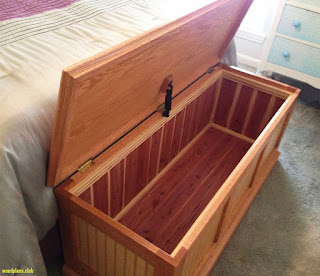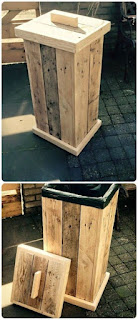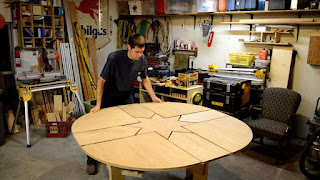Easy 2x4 Furniture Plans for Practical and Affordable Builds
Hey there, fellow DIY enthusiasts! Let's talk about building furniture. Specifically, let's talk about building awesome, practical, and affordable furniture using the humble 2x4. Forget fancy hardwoods and complicated joinery – we're going for straightforward projects that even a beginner can tackle. Think sturdy, functional pieces that look great and won't break the bank. Ready to get your hands dirty?
Why Choose 2x4s?
Before we dive into the plans, let's chat about why 2x4s are the unsung heroes of DIY furniture. They're readily available at any home improvement store, incredibly affordable, and surprisingly versatile. Plus, they're strong enough for most furniture projects, making them perfect for beginners. No need to worry about complicated cuts or specialized tools – basic carpentry skills are all you'll need.
Advantages of Using 2x4s:
- Affordability: 2x4s are one of the cheapest lumber options out there.
- Availability: You can find them at almost any hardware store.
- Strength: They're surprisingly strong for their size, suitable for many furniture pieces.
- Ease of Use: They're easy to cut and work with, even for beginners.
Simple 2x4 Furniture Projects:
Now for the fun part! Let's explore some easy-to-build 2x4 furniture projects. These plans are simplified, focusing on the core structure and functionality. Remember to always prioritize safety and use appropriate safety gear like safety glasses and work gloves.
1. The Classic 2x4 Bench
Materials:
- Six 2x4s (8 feet long)
- Wood screws (2.5-inch)
- Wood glue
- Sandpaper
- Optional: Wood stain or paint
Instructions:
- Cut two 2x4s to your desired bench length. These will be the seat supports.
- Cut four 2x4s to the desired bench height. These will be the legs.
- Attach the legs to the seat supports using wood glue and screws, creating a sturdy rectangular frame.
- Cut several 2x4s to the desired seat width and attach them to the frame, creating the seat surface. Ensure they are evenly spaced for a comfortable seat.
- Sand down any rough edges and apply stain or paint, if desired.
This basic bench is incredibly versatile. You can adjust the dimensions to fit your space and needs. Want a longer bench? Just use longer 2x4s! Want a taller bench? Simply adjust the leg height.
2. A Sturdy 2x4 Coffee Table
Materials:
- Eight 2x4s (8 feet long)
- Plywood (for the tabletop – size depends on your desired table dimensions)
- Wood screws (2.5-inch and 1.5-inch)
- Wood glue
- Sandpaper
- Optional: Wood stain or paint
Instructions:
- Build a simple rectangular frame using four 2x4s for the base. Remember to use wood glue and screws for extra strength.
- Cut four more 2x4s to act as supports for the tabletop. Attach these to the inside corners of the base frame.
- Cut your plywood to the desired tabletop size and attach it to the supports using screws. Consider using shorter screws here to avoid going through the top of the plywood.
- Sand and finish with stain or paint.
This coffee table offers a modern, minimalist look. You can easily customize the size and add features like wheels for mobility.
3. A Simple 2x4 Bookshelf
Materials:
- Six 2x4s (8 feet long)
- Plywood or MDF for shelves (size depends on your desired shelf dimensions)
- Wood screws (1.5-inch and 2.5-inch)
- Wood glue
- Sandpaper
- Optional: Wood stain or paint
Instructions:
- Build two vertical side supports using three 2x4s each, screwing them together to create a sturdy structure.
- Cut your plywood or MDF for the shelves and attach them to the vertical supports using screws and wood glue. Space them evenly according to your preference.
- Sand and finish with stain or paint.
This bookshelf is a great starting point for beginners. It's easy to adjust the number and height of shelves to meet your storage needs.
Tips for Success:
- Measure twice, cut once: This is crucial in any woodworking project. Accuracy is key for a clean, professional finish.
- Use wood glue: Glue significantly strengthens your joints, making your furniture more durable.
- Pre-drill holes: Pre-drilling prevents the wood from splitting when you drive in screws.
- Sand everything: Sanding smooths out any rough edges and creates a more professional look.
- Finish it off: A coat of stain or paint protects the wood and adds a nice touch.
Commonly Asked Questions (FAQs)
Now, let's address some frequently asked questions about building 2x4 furniture.
Q: What kind of screws should I use?
For most 2x4 projects, 2.5-inch wood screws are a good all-around choice. However, you may need shorter screws for attaching thin materials like plywood.
Q: Do I need special tools?
The basic tools you'll need are a saw (circular saw or hand saw), a drill, a screwdriver, a measuring tape, and sandpaper. Clamps can also be very helpful.
Q: How can I make my 2x4 furniture more aesthetically pleasing?
There are several ways to enhance the look of your 2x4 furniture. You can apply a stain or paint, add decorative elements like trim, or even incorporate different types of wood for contrast.
Q: How durable is 2x4 furniture?
While 2x4 furniture isn't as durable as furniture made from hardwoods, it's surprisingly sturdy for everyday use, especially if you use proper joinery techniques and plenty of wood glue.
Q: Can I build more complex furniture with 2x4s?
Absolutely! While these plans focus on simple designs, you can absolutely adapt the techniques and principles to build more elaborate pieces. With practice and creativity, you can build almost anything!
So there you have it! A starting point for your 2x4 furniture journey. Remember to have fun, be patient, and don't be afraid to experiment. Happy building!



























